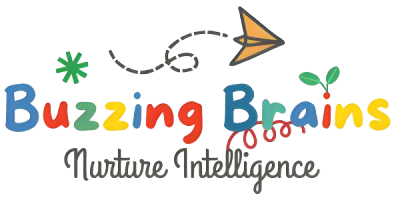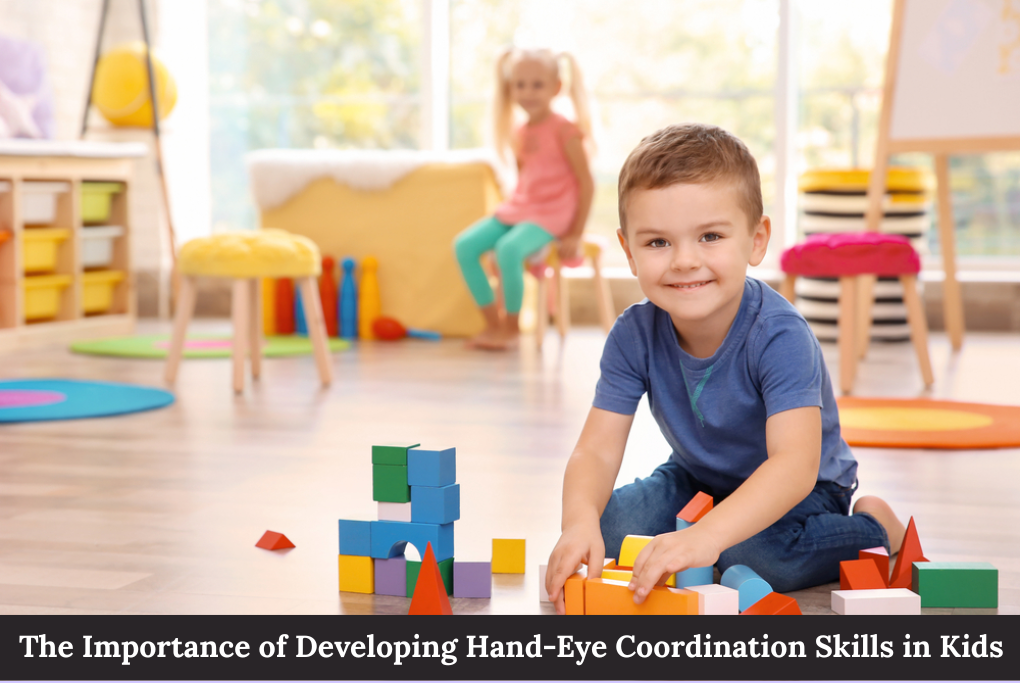As a parent, you want your child to grow into a healthy, confident, and capable individual. One crucial aspect of childhood development is hand-eye skills, which enable kids to track and respond to visual information with precise movements. In this article, we’ll explore the importance of developing hand-eye coordination skills in kids, the repercussions of not having developed these skills, and provide tips and strategies for parents to improve hand-eye coordination skills in their children.
What are Hand-Eye Coordination Skills?
Hand-eye coordination skills refer to the ability to track and respond to visual information with precise movements. These skills involve the integration of sensory information from the eyes, brain, and muscles to perform tasks that require coordination and accuracy. Hand-eye coordination skills are essential for everyday activities like catching, throwing, and kicking.
Why is it Important to Develop Hand-Eye Coordination Skills?
Developing hand-eye coordination skills is crucial for kids’ physical, emotional, and cognitive development. Here are some reasons why:
Improved Physical Fitness: Hand-eye coordination skills help kids develop physical fitness, coordination, and balance, which are essential for overall health and well-being.
Enhanced Cognitive Function: Hand-eye coordination skills are linked to cognitive function, as they require kids to process visual information and make decisions based on that information.
Better Academic Performance: Research suggests that hand-eye coordination skills are linked to better academic performance, particularly in subjects that require fine motor skills, such as writing and drawing.
Increased Confidence: Mastering hand-eye coordination skills can boost kids’ confidence and self-esteem, enabling them to participate in physical activities and sports with greater ease.
Repercussions of Not Having Developed Hand-Eye Coordination Skills
If kids don’t develop hand-eye coordination skills, they may face several challenges, including:
Difficulty with Physical Activities: Kids who struggle with hand-eye coordination skills may find it challenging to participate in physical activities, sports, or games that require coordination and movement.
Low Confidence: Poor hand-eye coordination skills can lead to low confidence and self-esteem, making kids more likely to avoid physical activities or social interactions.
Cognitive Delays: Hand-eye coordination skills are linked to cognitive development, and delays in hand-eye coordination skills can impact cognitive function and academic performance.
Effects of a Lack of Hand-Eye Coordination Skills in Different Age Groups
The effects of a lack of hand-eye coordination skills can vary depending on the age group:
2-5 years: Kids in this age group may struggle with basic hand-eye coordination skills like catching and throwing, which can impact their physical development and confidence.
5-10 years: Kids in this age group may find it challenging to participate in sports or games that require coordination and movement, which can impact their social skills and self-esteem.
10+ years: Kids in this age group may struggle with more complex physical activities, such as team sports or dance, which can impact their physical fitness and overall well-being.
Games, Puzzles, and Activities to Improve Hand-Eye Coordination Skills
Here are some games, puzzles, and activities that can help improve hand-eye coordination skills in kids:
Ball Games: Ball games, such as catch, throw, and kick, can help kids develop hand-eye coordination skills.
Puzzles: Puzzles, such as jigsaw puzzles or brain teasers, can help kids develop problem-solving skills and hand-eye coordination.
Racquet Sports: Racquet sports, such as tennis or badminton, can help kids develop hand-eye coordination skills and reaction time.
Obstacle Courses: Obstacle courses can help kids develop hand-eye coordination skills, balance, and agility.
Strategies to Improve Hand-Eye Coordination Skills in Children
Here are some strategies to improve hand-eye coordination skills in kids:
Practice Regularly: Encourage kids to practice hand-eye coordination skills regularly, using games and activities that promote physical activity and skill-building.
Make it Fun: Make hand-eye coordination skill development fun and engaging, using games and activities that kids enjoy.
Provide Opportunities for Practice: Provide opportunities for kids to practice hand-eye coordination skills, such as throwing, catching, or kicking.
Be a Role Model: Be a role model for physical activity and hand-eye coordination skill development, engaging in activities with your kid and promoting a healthy, active lifestyle.
Tips for Parents
Here are some tips for parents to help improve hand-eye coordination skills in their kids:
Encourage Physical Activity: Encourage kids to engage in regular physical activity, such as sports, dance, or outdoor play.
Provide a Safe Environment: Provide a safe environment for kids to practice hand-eye coordination skills, free from obstacles and hazards.
Be Supportive: Be supportive and encouraging, praising kids for their efforts and progress.
Make it a Family Affair: Make hand-eye coordination skill development a family affair, engaging in activities with your kid and promoting a healthy, active lifestyle.
Additional Tips for Parents
Here are some additional tips for parents to help improve hand-eye coordination skills in their kids:
Use Everyday Activities: Use everyday activities, such as playing catch or tossing a ball, to help kids develop hand-eye coordination skills.
Encourage Active Play: Encourage kids to engage in active play, such as running, jumping, and climbing, to help develop their hand-eye coordination skills.
Provide Feedback: Provide feedback to kids on their performance, helping them to adjust their movements and improve their hand-eye coordination skills.
Make it Challenging: Make activities challenging for kids, gradually increasing the difficulty level as they develop their hand-eye coordination skills.
Common Challenges and Solutions
Here are some common challenges that parents may face when trying to improve hand-eye coordination skills in their kids, along with some potential solutions:
Lack of Motivation: Encourage kids to find activities that they enjoy, and provide positive reinforcement and support.
Limited Access to Resources: Look for free or low-cost resources in your community, such as parks or playgrounds, where kids can practice hand-eye coordination skills.
Physical Limitations: Consult with a healthcare professional or physical therapist to develop a plan that meets your kid’s needs and abilities.
The Importance of Early Intervention
Early intervention is critical for kids who are struggling with hand-eye coordination skills. Research shows that kids who receive early intervention and support are more likely to develop the skills they need to succeed in physical activities and other areas of life.
Conclusion
Hand-eye coordination skills are essential for kids’ physical, emotional, and cognitive development. By providing opportunities for practice, making it fun, and being a positive role model, parents can help their kids develop the hand-eye coordination skills they need to succeed.

